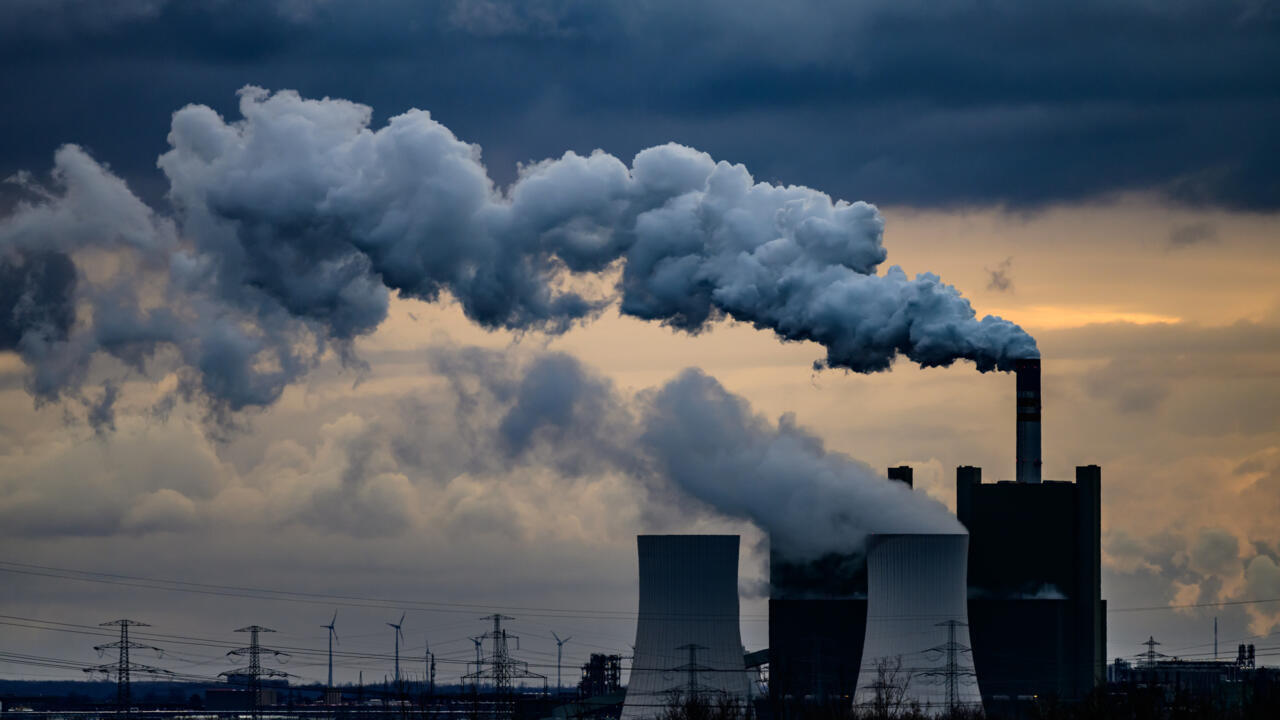EU leaders push for 10-year carbon-cut deal ahead of UN climate summit – France 24

Report on European Union’s 2040 Climate Target Deliberations and Alignment with Sustainable Development Goals
Advancing SDG 13: Climate Action
European Union leaders convened to deliberate on a strategic 10-year carbon emissions reduction target, a critical step in fulfilling commitments under the Paris Agreement and advancing Sustainable Development Goal 13 (Climate Action). The discussions are foundational for the EU’s contribution to the upcoming United Nations COP30 climate summit. The primary objective under consideration is a proposed 90 percent cut in emissions by 2040, relative to 1990 levels, which serves as a milestone towards the bloc’s 2050 net-zero goal.
- Primary Target: A 90% reduction in carbon emissions by 2040.
- International Commitment: The target is designed to align with the Paris Agreement and inform the EU’s 2035 emissions plan for COP30.
- Global Leadership: By setting ambitious targets, the EU aims to maintain its lead role in the global climate fight, encouraging other major polluters to increase their commitments.
Balancing Climate Goals with Economic and Industrial Sustainability
The negotiations highlight the inherent challenge of balancing ambitious climate targets with economic stability and industrial competitiveness, directly engaging with SDG 8 (Decent Work and Economic Growth) and SDG 9 (Industry, Innovation, and Infrastructure). Concerns were raised by member states and business sectors regarding the economic impact of the green transition, particularly amidst competition from global players like China.
- Economic Concerns: Member states, including Poland and the Czech Republic, expressed that the proposed target may be unachievable, citing the financial burden on businesses, including the automotive industry.
- Industrial Transition: The debate reflects the need for a strategy that supports sustainable industrialization and fosters innovation in green technologies, ensuring the EU economy remains resilient and competitive.
- Just Transition: Implicit in the discussions is the necessity of a pragmatic and flexible approach to ensure that the transition to a green economy does not disproportionately affect specific industries or regions.
Policy Framework and Proposed Flexibility Measures
While no final decision was reached, the summit outlined a path forward by requesting specific flexibility mechanisms within the proposed climate framework. These measures are intended to make the targets more achievable while upholding the overarching goals related to SDG 7 (Affordable and Clean Energy) and SDG 12 (Responsible Consumption and Production).
- Inclusion of a Revision Clause: Leaders urged for a clause in the 2040 proposal to allow for future adjustments based on evolving economic and technological conditions.
- Use of Carbon Credits: A proposal was made to permit countries to utilize an adequate level of carbon credits to meet their national targets.
- Review of Sectoral Policies: Leaders welcomed a review of key policies, such as the 2035 ban on new combustion engine vehicles, to ensure a balanced and manageable transition towards sustainable production and consumption patterns.
Future Outlook and Commitment to Global Partnerships (SDG 17)
Analysts view the summit’s outcome as a crucial step in maintaining momentum, despite internal divisions. The discussions reaffirmed the EU’s commitment to its climate agenda, which is essential for attracting investment in green technologies and strengthening SDG 17 (Partnerships for the Goals) through its leadership in international climate forums. European Commission President Ursula von der Leyen emphasized the importance of staying the course to build a robust, sustainable, and innovative economy. The focus remains on striking a careful balance between ambitious climate action and pragmatic implementation, ensuring that flexibility does not lead to a dilution of the EU’s long-term sustainability objectives.
Analysis of SDGs in the Article
1. Which SDGs are addressed or connected to the issues highlighted in the article?
The article primarily addresses issues related to climate change, industrial policy, and international cooperation, which directly connect to several Sustainable Development Goals (SDGs). The most relevant SDGs identified are:
- SDG 13: Climate Action: This is the central theme of the article. The entire text revolves around the EU’s efforts to set ambitious targets for cutting carbon emissions, its commitment to the Paris Agreement, and its participation in UN climate conferences (COP30). The goal is to take urgent action to combat climate change and its impacts.
- SDG 9: Industry, Innovation and Infrastructure: The article highlights the conflict between climate goals and the interests of “the bloc’s ailing businesses including its cherished car industry.” It discusses the need for businesses to “invest in greening their operations” and the EU’s ambition to “become a leader in green technologies,” which relates to building resilient infrastructure, promoting inclusive and sustainable industrialization, and fostering innovation.
- SDG 17: Partnerships for the Goals: The article emphasizes the importance of global cooperation. It mentions the EU’s commitment to the “Paris Agreement,” a 2015 UN climate deal, and the pressure to agree on targets ahead of the “United Nations COP30 climate summit” in Brazil. This demonstrates the need for global partnerships to achieve sustainable development.
- SDG 7: Affordable and Clean Energy: While not the main focus, this goal is implicitly connected. The discussion about a “2035 ban on new combustion engine vehicles” and the broader push for “greening their operations” implies a necessary transition towards cleaner energy sources and technologies to power transport and industry.
2. What specific targets under those SDGs can be identified based on the article’s content?
Based on the article’s discussion, several specific SDG targets can be identified:
- Target 13.2: Integrate climate change measures into national policies, strategies and planning.
- The article is centered on the EU’s process of establishing a new climate policy: a target to “cut emissions by 90 percent by 2040, compared to 1990 levels.” This is a clear example of integrating climate change measures into the bloc’s long-term strategy and planning.
- Target 9.4: By 2030, upgrade infrastructure and retrofit industries to make them sustainable, with increased resource-use efficiency and greater adoption of clean and environmentally sound technologies and industrial processes.
- The article discusses the pressure on businesses, particularly the car industry, to “invest in greening their operations.” The EU’s ambition to “become a leader in green technologies” and the debate around the “2035 ban on new combustion engine vehicles” directly relate to retrofitting industries and adopting cleaner technologies.
- Target 17.16: Enhance the global partnership for sustainable development, complemented by multi-stakeholder partnerships that mobilize and share knowledge, expertise, technology and financial resources, to support the achievement of the sustainable development goals in all countries, in particular developing countries.
- The EU’s actions are framed within the context of international agreements. The article explicitly mentions its reaffirmed “commitment to the Paris Agreement” and the need to agree on an emissions target ahead of the “United Nations COP30 climate summit.” This demonstrates participation in a global partnership for climate action.
3. Are there any indicators mentioned or implied in the article that can be used to measure progress towards the identified targets?
Yes, the article mentions or implies several specific indicators that can be used to measure progress:
- Indicator for Target 13.2: The article provides quantifiable metrics for measuring greenhouse gas emissions.
- The proposed target itself: A “90 percent” reduction in emissions by 2040, compared to 1990 levels.
- A measure of past progress: The EU has “already cut emissions by 37 percent compared to 1990.”
- The development of long-term strategies: The plan to submit a “2035 emissions reduction plan to the Brazil summit.”
- Indicator for Target 9.4: The article points to a specific policy that serves as an indicator for the adoption of clean technologies in a major industry.
- The policy milestone of a “2035 ban on new combustion engine vehicles” is a concrete indicator of the transition to cleaner technology in the automotive sector.
- Indicator for Target 17.16: Progress in global partnerships is indicated by active participation and commitment to international climate frameworks.
- The EU’s active engagement and setting of targets in preparation for the “United Nations COP30 climate summit” serves as an indicator of its commitment to the global partnership.
4. Summary Table of SDGs, Targets, and Indicators
| SDGs | Targets | Indicators |
|---|---|---|
| SDG 13: Climate Action | Target 13.2: Integrate climate change measures into national policies, strategies and planning. |
|
| SDG 9: Industry, Innovation and Infrastructure | Target 9.4: Upgrade infrastructure and retrofit industries to make them sustainable…and with greater adoption of clean and environmentally sound technologies. |
|
| SDG 17: Partnerships for the Goals | Target 17.16: Enhance the global partnership for sustainable development. |
|
| SDG 7: Affordable and Clean Energy | Target 7.2: By 2030, increase substantially the share of renewable energy in the global energy mix. |
|
Source: france24.com
What is Your Reaction?
 Like
0
Like
0
 Dislike
0
Dislike
0
 Love
0
Love
0
 Funny
0
Funny
0
 Angry
0
Angry
0
 Sad
0
Sad
0
 Wow
0
Wow
0
















































/environment-climate-change-and-health-(ech)/water-sanitation-hygiene-and-health-(wsh)/landfill-tuvalu-36092.tmb-1200v.jpg?sfvrsn=5c21fe40_1#)

.jpg.webp?itok=0ZsAnae9#)


























